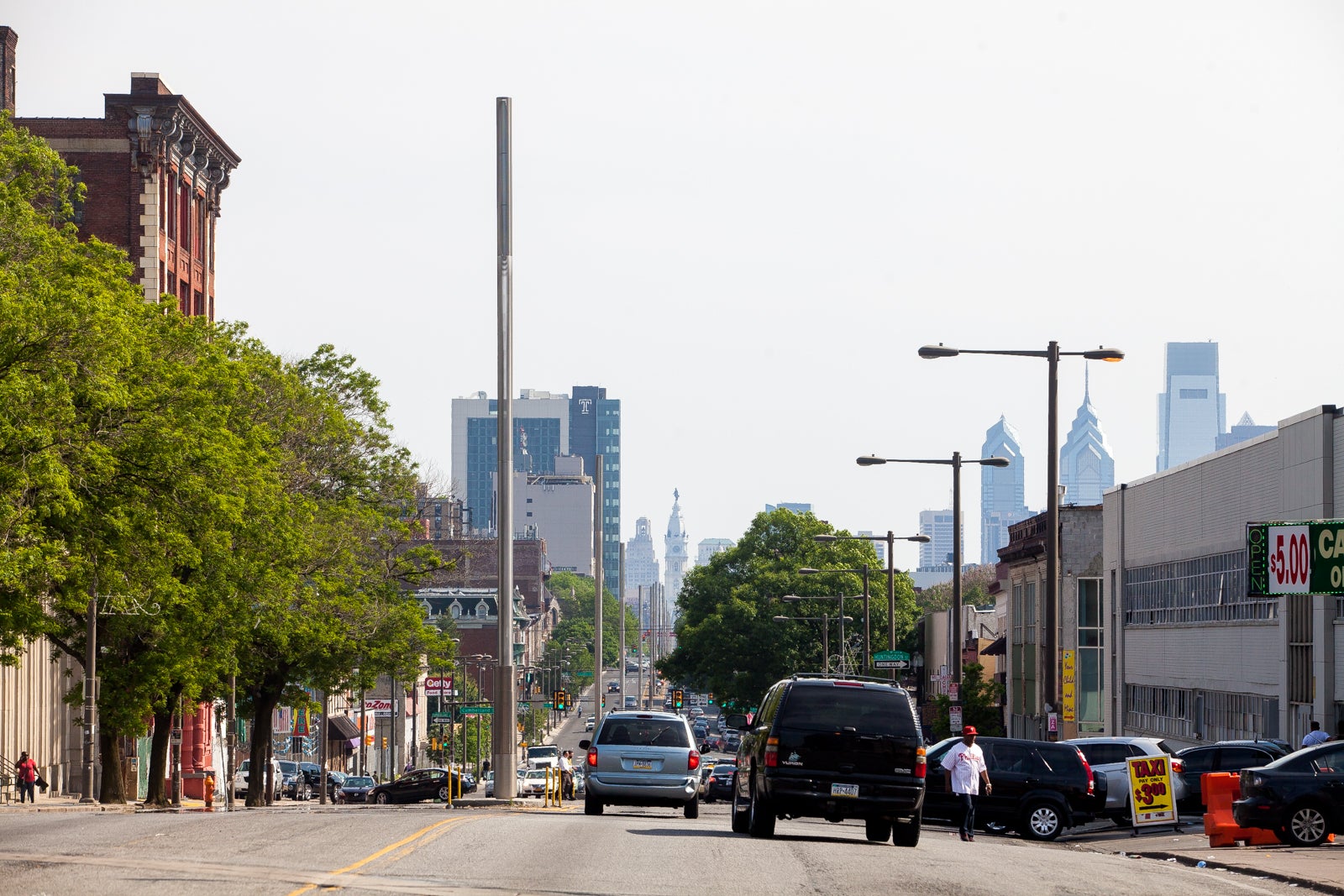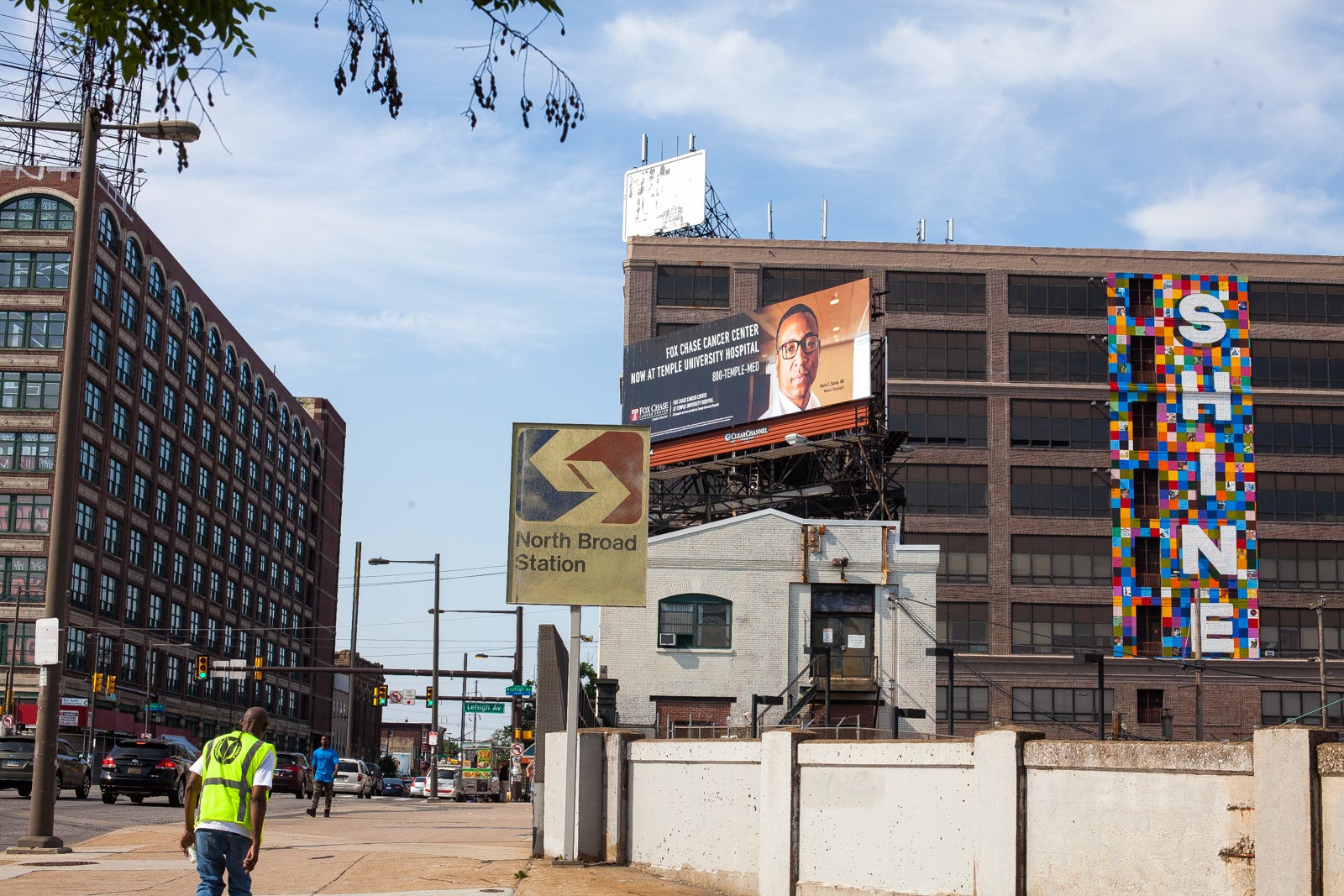A tale of two Broad Streets: How Avenue of the Arts splintered
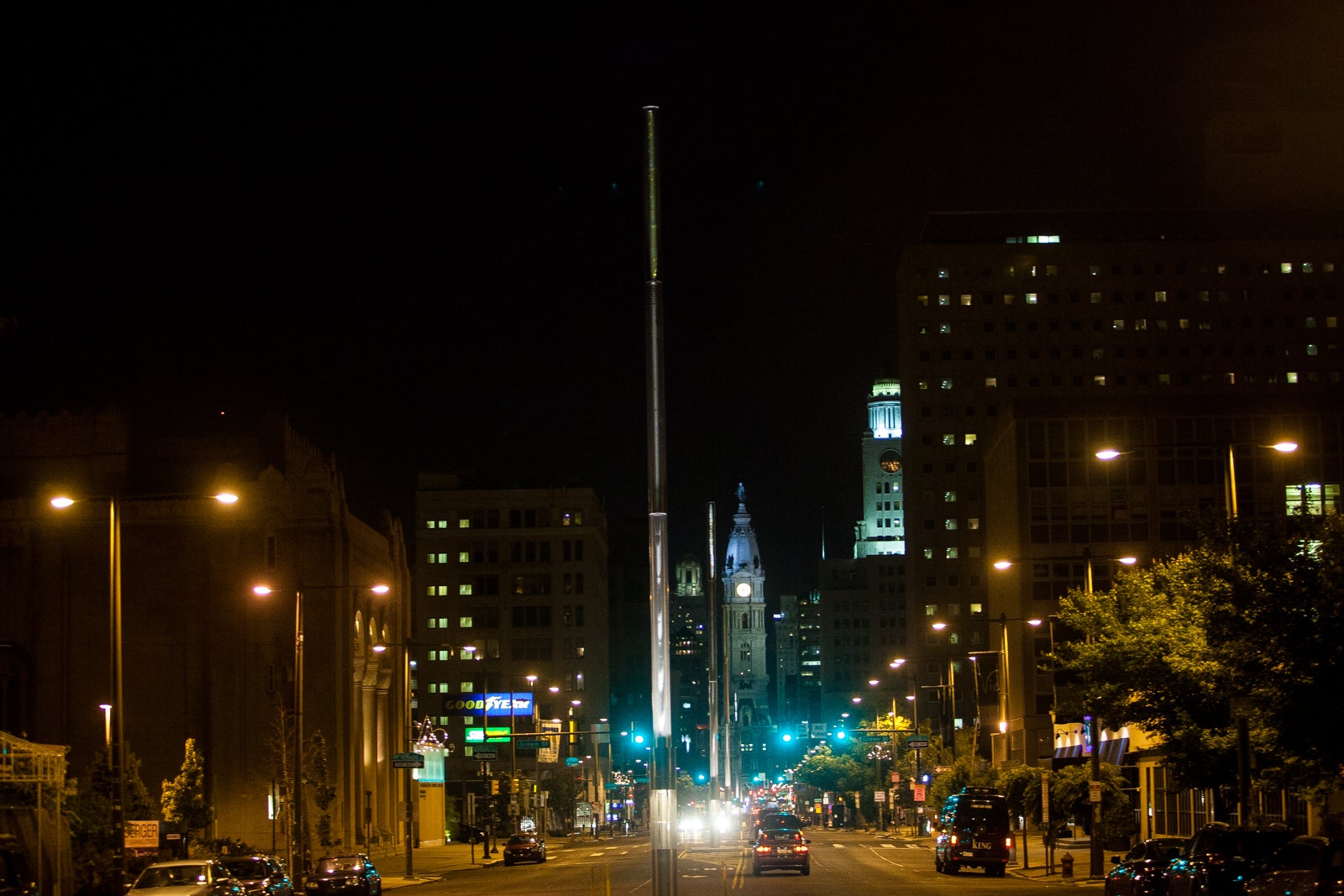
Five years ago, on Temple University’s campus, Avenue of the Arts CEO Karen Lewis stood beside a prototype of a “light mast,” the first of 41 metallic, illuminated poles that line the center median along much of North Broad Street today.
Before a crowd of politicians and university officials, gathered at nighttime to show off the mast’s radiance, she heralded the project as a beacon of the future. A sign that the investments that made her organization famous on South Broad were finally coming to the street’s neglected northern stretch.
“When we think about North Broad Street, it’s still sort of ‘the scary place.’ I’m hoping our project, with other projects, will help change the perception,” she told the Inquirer, in a 2011 interview about the proposed improvements. “I like to think of it as one street, with different experiences along the way.”
The masts were billed as just the beginning of long-awaited change for North Broad, part of a sweeping, $50 million vision to remake the worn strip. Streetscape improvements on South Broad, including replacing streetlights with replicas of those that lined the street in the 19th century, were among the projects that made Avenue of the Arts famous in the late 90s — the light mast project was a deliberate attempt to repeat those successes up north.
But three years after the event at Temple, Lewis would be gone; the single 55-foot light mast on Temple’s campus still perched alone next to the bustling university. Avenue of the Arts had lost its mandate to operate on North Broad altogether, the product of board-level revolt and political intervention, much of its funding depleted.
And today, that “single street” is more divided than ever.
Lewis had long wanted to change all that. Her nonprofit had been closely identified with the transformation of the declining office strip south of City Hall into a booming theater district under the Rendell administration, capped off with the construction of the $180 million Kimmel Center for the Performing Arts. North Broad was supposed to follow suit.
Today, some former Avenue of the Arts leaders say her tenure was typified by clashes with the wealthy, mostly white members that stocked the organization’s board, foreshadowing the breakup of the organization.
“[Council President Darrell Clarke] attended several board meetings and said ‘Now we’re going to focus on North Broad. Mayor [Michael] Nutter agreed, [Deputy Mayor] Alan Greenberger agreed. The focus was going to be on North Broad, the time had come,” said former board member Ken Scott, in a recent phone interview. “But the feeling from Avenue of the Arts was like, ‘Yeah, I hear you, but that’s not really what we’re trying to do.’”
Scott says the nascent North Broad Renaissance, conceived last year with Clarke’s support to take over the Avenue of the Arts’ northern boundaries, exists today largely because of these irreconcilable differences. The vestigial organization it emerged from has been relegated to bit parts in small projects, chipping in on intersection restriping and tree planting projects on South Broad, its political future uncertain.
Still technically unfinished, the light masts debuted in 2015 to widespread public criticism over poor aesthetics and chronic technical issues. Largely disowned behind the scenes and brought to completion almost solely by the city’s Commerce Department, the final product was essentially built by no one, for no one.
City officials now alternatively say the Commerce Department’s takeover and fissuring of Avenue of the Arts was either part of the of the plan all along or that the overly ambitious streetscaping plan for North Broad ironically forced the schism.
“It was just such a big project and it became a big part of the Avenue of the Arts operations. It wasn’t what they had historically done,” said Commerce Department deputy Duane Bumb, who came to oversee the North Broad project. “There was always an expectation that after we installed some of the big improvements that we would need to create a special services district to manage maintenance.”
Others, like Scott, painted a different picture.
“It got left to the architect and the designer and Commerce to carry it all,” he said. “Nobody on the Avenue of the Arts side wanted to run the project.”
Avenue of the Arts, Inc., was born on North Broad Street, in a way. The nonprofit emerged out of the Sassafras Corporation, created by the William Penn Foundation to string together a disparate group of arts organizations. Many of those groups were located on North Broad Street, but a confluence of downtown interests would quickly steer the new nonprofit in a different direction.
Board chair Midge Rendell, along with her husband and former mayor Ed Rendell, became some of the biggest early boosters of the “Avenue of the Arts,” a concept that soon became interchangeable with the nonprofit itself and the quest to build a modern showpiece performing arts venue — today’s Kimmel Center.
Scott recalls Midge Rendell telling the board in the early 2000s that the group had “accomplished its mission on South Broad” and needed to pivot north. Lewis, a former director at the Greater Philadelphia Tourism and Marketing Corporation, was brought in to lead that new direction.
“The avenue has had great success under…the current board,” said Lewis in 2000, citing the Kimmel Center project. “We have to try to do some of those things on the north side of the avenue.”
Those high expectations translated into a $50 million North Broad streetscaping plan that even covered adjacent blocks stretching to 15th and 13th streets. $3.5 million had long been earmarked to kick off North Broad improvements under the state’s Redevelopment Assistance Capital Program.
Everything appeared to have fallen into place for a long-distressed strip: an energetic new director, a “big idea” vision, the whiff of state money, and support from a board chair with a direct line to the new governor, following Rendell’s 2002 gubernatorial victory.
But privately, the group had arrived at the existential crisis that would dominate much of the next decade, as Lewis battled to bring a reluctant board’s focus northward.
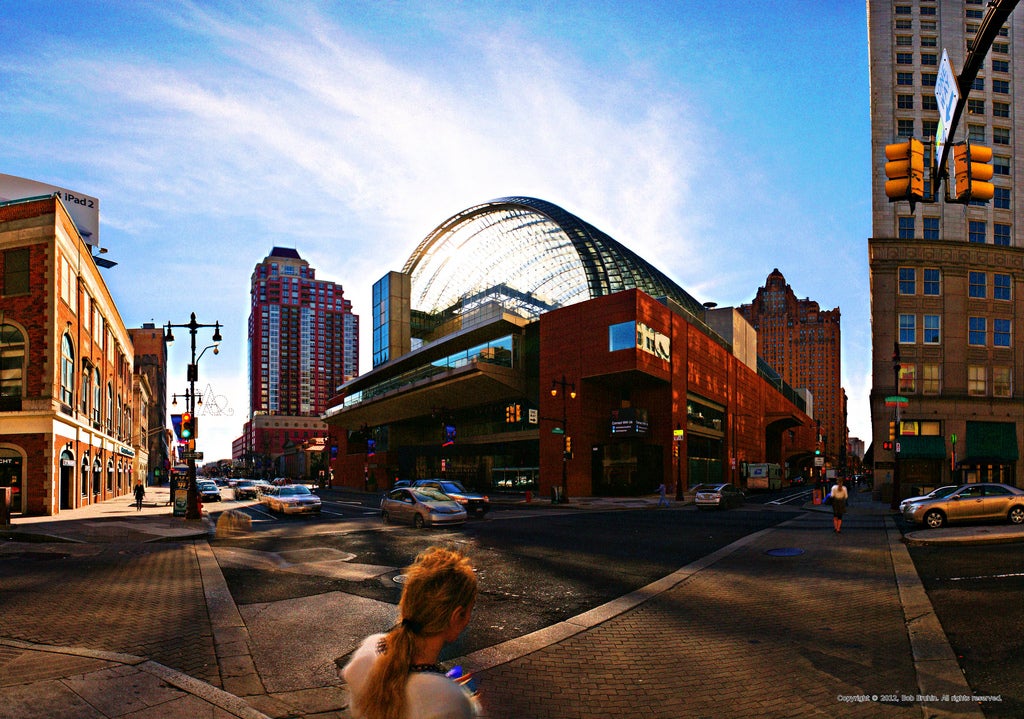
“Because of the South Broad interests…it just hadn’t been a priority to support the North Broad arts organizations,” Scott said of this period. “It was political.”
Today a VP of external affairs at Drexel, Lewis, who is African-American, acknowledged some challenges were related to the composition of the board: mostly wealthy, white and Center City-focused. She said they had a hard time understanding the potential of a place some had rarely visited.
“I remember a meeting of stakeholders and there were some stakeholders from South Broad who said ‘Why do we have to do North Broad?’ They’d say ‘What’s even up there?’” she recalled. “It’s difficult when you report to a board and your vision isn’t shared.”
For years, there was much talk but little movement. Where the organization’s money was directed during that period speaks to some of those frustrations.
“Lo and behold, during our 20 years anniversary [in 2013], we found that 80 percent of all our funding had gone to South Broad,” said Scott.
By 2014, Lewis had left for Drexel. She said she simply wanted to depart on “a high note,” because the group had finally patched together a total of $14 million to pay for the lighting and greening component of the North Broad plan — although some sources said disagreements with the board were the driving factor.
Despite the one-off infusion of government money, the organization’s annual capacity was dwindling. Revenues had declined from $1 million annually in 2010 to around $480,000 in 2014, according to financial disclosures. The organization burned through nearly all of the $1.2 million in savings over the same period of time, ending up with just $72,000 on hand. The $50 million vision had long since been jettisoned, and some sources said the lighting project was only finished because grant money from the Rendell era had already been committed to the project.
Bumb, from Commerce, chalked the decline up to politics and shifting priorities.
“It’s reflective of the historical support they received from the city and state. That largely coincided with the period of time where Ed Rendell was Governor,” he said. “It was created when Ed was mayor, specifically to service the area between City Hall and Washington Ave. It fulfilled that mandate.”
If Lewis’ counsel to bet on a booming North Broad Street in 2002 amounted to prescience, when she left, the organization was effectively behind the times. Renovations of the Divine Lorraine and millions worth of new development projects were falling into place, while Temple University was expanding its presence on Broad Street.
In mid-2014, Council President Clarke, who had a seat on the Avenue of the Arts board, announced the formation of a splinter group called North Broad Renaissance. By then, Midge Rendell had left as board chair and Lewis was replaced by a retired banker from Chester County, Paul S. Beideman.
Beideman, reached at home after numerous attempts to contact him through his Avenue of the Arts office went unanswered, downplayed the fragmentation as a natural evolution. He said the troubled execution of the years-delayed streetscaping project — blasted as a too-dim “branding misfire” by Inquirer architecture critic Inga Saffron after its unveiling last year — was not a reflection of internal turmoil. It was always the plan for Commerce Department to handle execution, he said, steering further questions to that department.
“We had played a leadership role in that project for quite some time and now Commerce is the department to speak on it,” he said. “They’re the one group that’s really been involved in the thing since the beginning, the one stable presence since the beginning.”
While Lewis acknowledged the plan had long been for the city to handle the actual construction of streetscape improvements, she and Scott said the underwhelming final product hadn’t played out the way it was originally envisioned.
They traced big problems, like the obvious dimness of the poles — which Bumb said he hoped to improve through a contingency budget — to a lack of continued guidance from the organization that conceived of the project, after it was handed off to a comparatively disinterested government agency.
“I wanted to stand at City Hall and have something that would beacon your attention north,” said Lewis. “But I think that there were some of our folks who were disengaged. I’m looking at the flip side, if we had more buy in from our stakeholders — if it’s lukewarm, then it makes sense that the city would be making more of those decisions.”
Scott was more direct.
“It was supposed to be symbolic of the rebirth of North Broad. It was supposed to be bright and change colors. That was the general idea, but it became a Commerce thing where they just left it to the architect,” he said. “They didn’t want it to be too gaudy or too bright and, by the way, it’s not going to change colors. I was like, ‘Okay, when did this happen?’ It all kind of fell apart.”
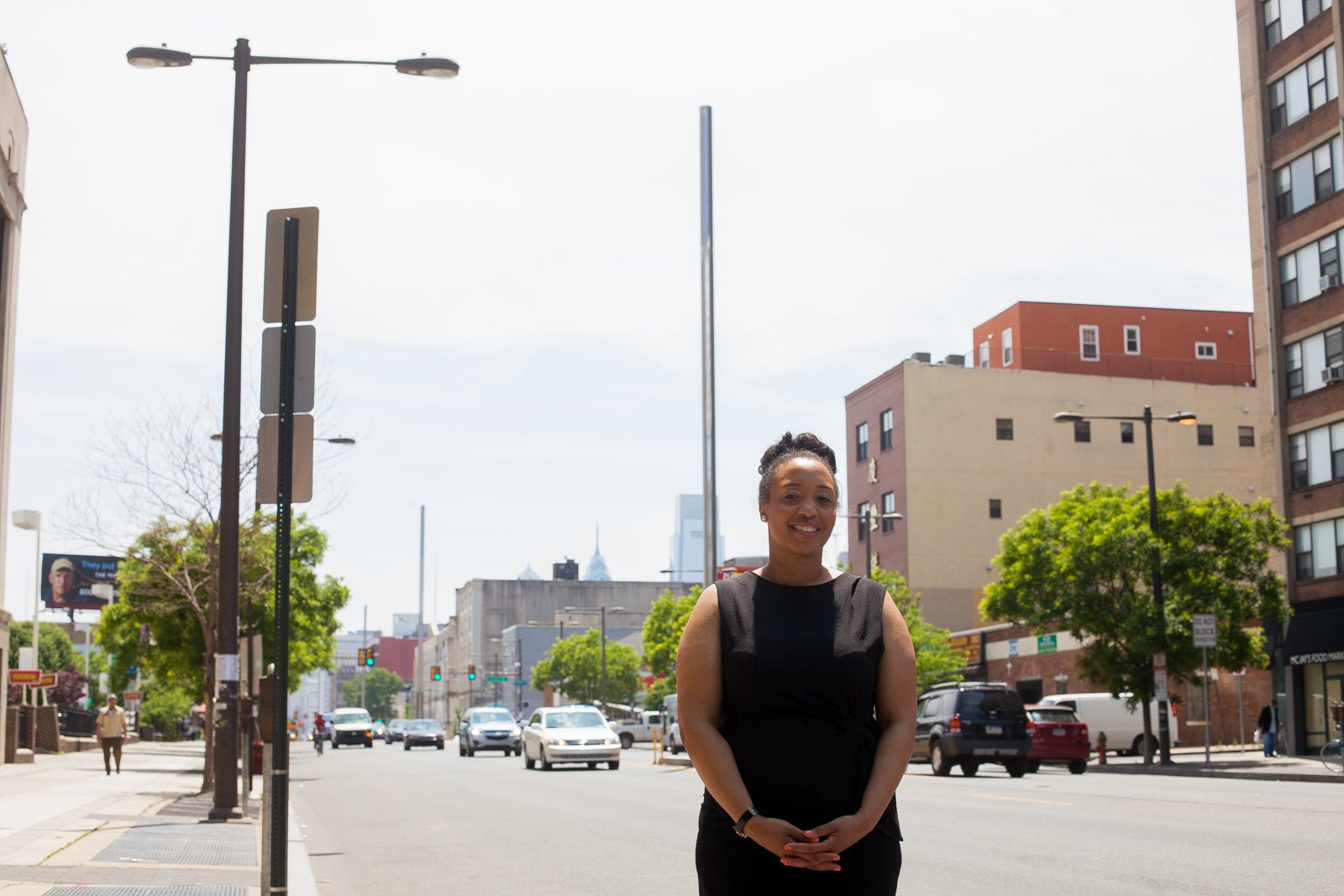
Today, Shalimar Thomas, the youthful former director of the local African American Chamber of Commerce, is working to pick up where Lewis left off, without the encumbrance of a dithering board. Thomas was hired to run North Broad Renaissance last November.
“Our goal is to be as engaged with our stakeholders as possible. Our stakeholders are everyone who lives and works on North Broad. It’s not just certain leaders or a certain community. We want to include the whole community,” she said. “It would be very beneficial if North Broad were revitalized, that economic impact would trickle into the whole region.”
With the support Council President Clarke and a small board comprised of members like Scott, there are no questions of focus. But Thomas acknowledged the nonprofit is essentially a startup — she is largely a staff of one. Since its creation in 2014, the group has only recently cemented a five-year, $375,000 annual operating contract from Commerce, along with $100,000 in voluntary stakeholder contributions.
Thomas said she hoped to emulate the University City District, getting buy-in from willing institutions and businesses with an interest in added services for North Broad, like security and further streetscape improvements, while Scott talked about luring jobs to the area through technology incubators.
But the days of big ticket, neighborhood-crafting economic development plans for Broad Street appear to be over, dying with a whimper.
“Focus is a good thing,” said Beideman, looking at the upside. “The Avenue of Arts on South Broad needs a focus, and so does North Broad.”
However, anchors like the big money institutions on South Broad, are also a good thing — lending a financial and civic base for a shared mission. That was supposed to be the point of the Avenue of the Arts.
Lewis said that the continuing development activity on North Broad means her spiritual successor is well positioned to make an impact, but the broader view is that one of Philadelphia’s most important streets is now divided between two dwarven nonprofits. For the time being, both are mostly relegated to modest boosterism.
“I would have loved to have stayed one organization. That’s what I always advocated. That we were one avenue with something for everyone,” Lewis said. “Just because we were divided by city hall we didn’t mean we had to act at it that way.”
WHYY is your source for fact-based, in-depth journalism and information. As a nonprofit organization, we rely on financial support from readers like you. Please give today.



